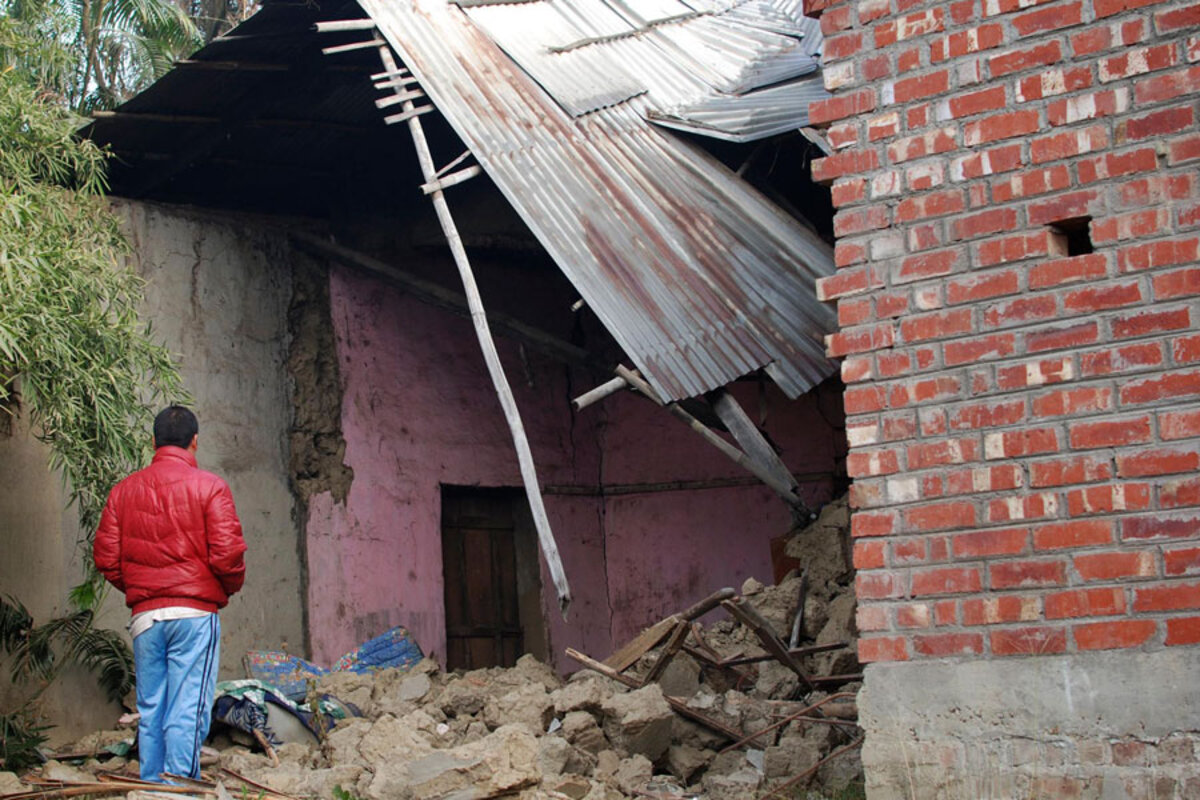Why are there so many big quakes in India and Nepal?
Loading...
A magnitude-6.7 earthquake struck the northeastern Indian state of Manipur, 18 miles west of the capital Imphal, about 4:35 a.m. Monday, killing at least 11 people and injuring over 200.
“It was the we’ve felt in Imphal,” disaster response worker Kanarjit Kangujam told Reuters.
But Nandita Hazarika, a top official at the disaster relief agency in Assam, says the low number of casualties can be attributed to the “” epicenter and the relatively low buildings in the city.
“It was like being tossed around ,” Joy Thanglian, a 33-year-old employee of state energy firm Bharat Petroleum, told Reuters.
An aftershock, with a magnitude of 3.6, was felt about five hours later.
And while the strength of Monday morning’s earthquake definitely surprised sleeping residents, “Moderate-to-large earthquakes in this region ,” the US Geological Survey (USGS) reports. The April 25th 7.8 earthquake in Kathmandu, Nepal, and subsequent 7.3 earthquake on May 12th, that left almost 9,000 dead is still fresh in the minds of Nepalis and their neighbors.
The border of the Indian and Eurasian plates is home to one of the “ of plate-tectonic forces”: the Himalayas. Stretching almost 2,000 miles between Tibet and India, the Himalayas are evidence of these two plates’ power.
Between 40 and 50 million years ago, the island of India collided into its present location adjacent to the Eurasian plate. The Indian and Eurasian landmasses had similar rock density, so neither plate was subducted under the other, the USGS explains. Thus, the building pressure between the plates was forced to move upwards, forming the highest mountain range in the world.
Typically head-on collisions between plates take place under the Earth’s surface in oceanic trenches as denser crust slides beneath lighter continental crust. But the Indian and Eurasian plates continue to move toward each other, as evidenced by Mount Everest’s each year.
And as the plates continue to move toward one another, pressure from the initial collision persists. “Some of the world’s most destructive earthquakes in history are that began some 50 million years ago when the Indian and Eurasian continents first met,” as explained by the USGS.
In 1934, a magnitude-8.2 quake struck India, killing over 30,000 people.
“We know that such earthquakes are overdue,” Dr. Jean-Philippe Avouac, a geophysicist at the California Institue of Technology, told ���Ǵ��� in 2011, referencing the 1934 event. “We have a lot of energy that needs to be released at some point.”
GeoHazards International (GHI), a non-profit organization working to reduce earthquake destruction in vulnerable communities throughout the world, argues that preventive earthquake measures are possible and attainable. GHI President Brian Tucker, a prominent geophysicist, studied a number of earthquake-prone cities in 2001.
“What we found is that the risk is knowable and the ,” he said in a GHI press release. “It has seemed that risk is mysterious and tragedy certain. But in fact, we can know both what will happen and what to do about it beforehand.”
Tucker urges government officials to assess the vulnerability of buildings, especially schools in hospitals, in these highly susceptible regions. And “We need to create mechanisms to to adhere to building codes,” he tells Time.





